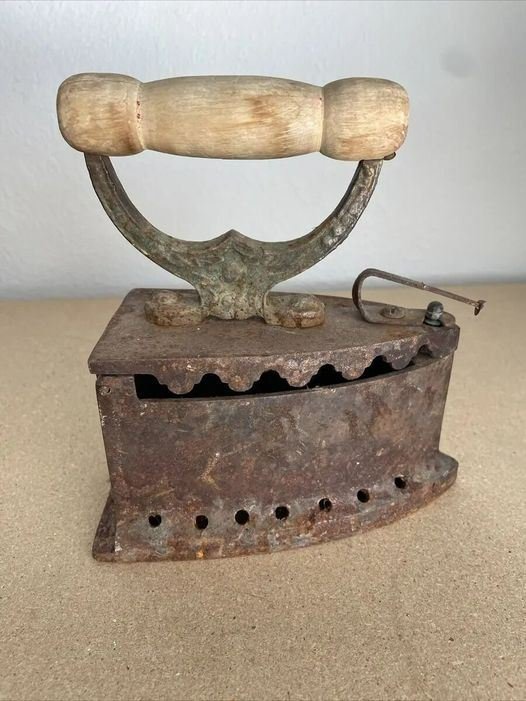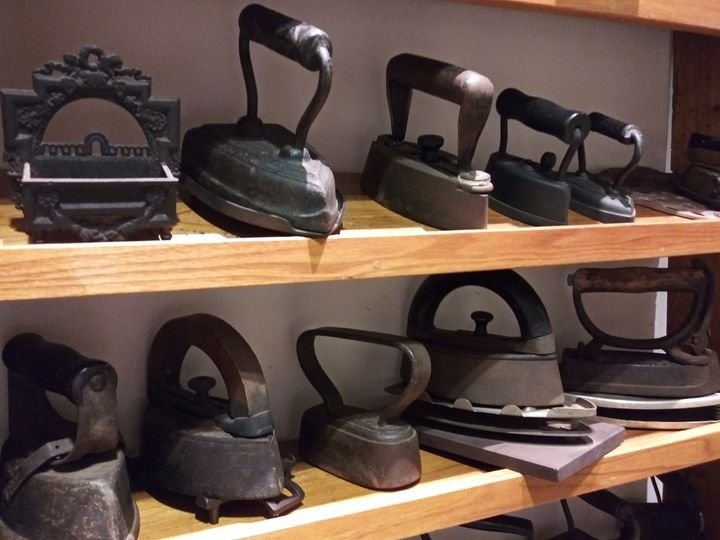When you first lay eyes on this sturdy, antique history tool, it’s easy to recognize it as an iron. But beyond its obvious purpose lies a secret that kept clothes crisp long before modern electricity-powered devices. What makes this historical iron so special? Keep reading to uncover its fascinating hidden secret.
A Hot Secret from the Past: How Coal Powered Irons
In today’s world, ironing is a quick task, thanks to electric irons with advanced heating technologies. But before the widespread availability of electricity, the process was much more labor-intensive. The coal-fueled iron, a vital household tool, was the go-to solution for families aiming to keep their clothes smooth and wrinkle-free.

This type of iron had a compartment designed to hold burning pieces of coal or charcoal. As the coal burned, it generated heat, which would be used to press garments and keep them crisp. Imagine the effort involved—loading hot coals, carefully controlling the heat, and then maneuvering this heavy tool across delicate fabrics. It wasn’t an easy task, but it was highly effective for its time.
The Role of Coal Irons in Household History
Before the invention of electric irons, the coal iron was a significant breakthrough. For centuries, people used various methods to smooth their clothes, such as placing heavy objects heated over an open flame onto fabrics.
These methods required substantial effort and often resulted in uneven or damaged clothing. The coal iron provided a more consistent, reliable source of heat, allowing for a much smoother press.
This antique iron not only reminds us of how daily chores were accomplished in earlier times, but it also highlights the resourcefulness of people who relied on alternative energy sources. The introduction of coal irons was a major step forward in household technology, simplifying the task of ironing and paving the way for more efficient solutions.
The Evolution of Ironing Technology
The journey of ironing technology reflects the broader story of human innovation. Before coal irons, heavy objects or irons heated on open flames were the standard tools for pressing garments.
These irons were made of solid metal, and due to their weight, they were often called “sad irons”—with “sad” being an old term meaning heavy or solid. These irons could weigh several pounds and required constant reheating as they quickly lost their warmth.
In 1882, the first electric iron was invented, revolutionizing the way people approached this common household task. However, it wasn’t until the 1940s that electric irons became widely used, as electricity became more available in homes across the globe.

Despite this technological advancement, the old “sad” irons didn’t disappear entirely. Many households continued to use them, and some even repurposed these hefty tools for other uses—such as bookends or doorstops.
A Piece of History on Display
Today, these coal-powered irons serve as a reminder of a bygone era. They are often found in museums or private collections, admired for their craftsmanship and the story they tell about life in earlier times. The Trenchard collection, for instance, showcases a range of “sad irons,” offering a glimpse into the evolution of this humble household tool.
These irons may no longer be used for their original purpose, but they remain valuable relics of domestic history, representing the everyday ingenuity of people from previous generations.
A Nod to the Past, A Step to the Future
Looking at the old coal irons of history, it’s clear how far we’ve come in terms of convenience and technology. The transition from manually loading coal into a heavy iron to today’s lightweight, electric-powered models demonstrates the incredible strides made in household tools.
Yet, there’s something remarkable about the durability and simplicity of these antique irons that continues to capture our imagination.
Whether you come across one of these relics at a museum or in an antique shop, take a moment to appreciate the craftsmanship and practicality that went into creating them.
They remind us of a time when even the simplest tasks required significant effort and skill—a testament to the resilience and resourcefulness of those who came before us.








